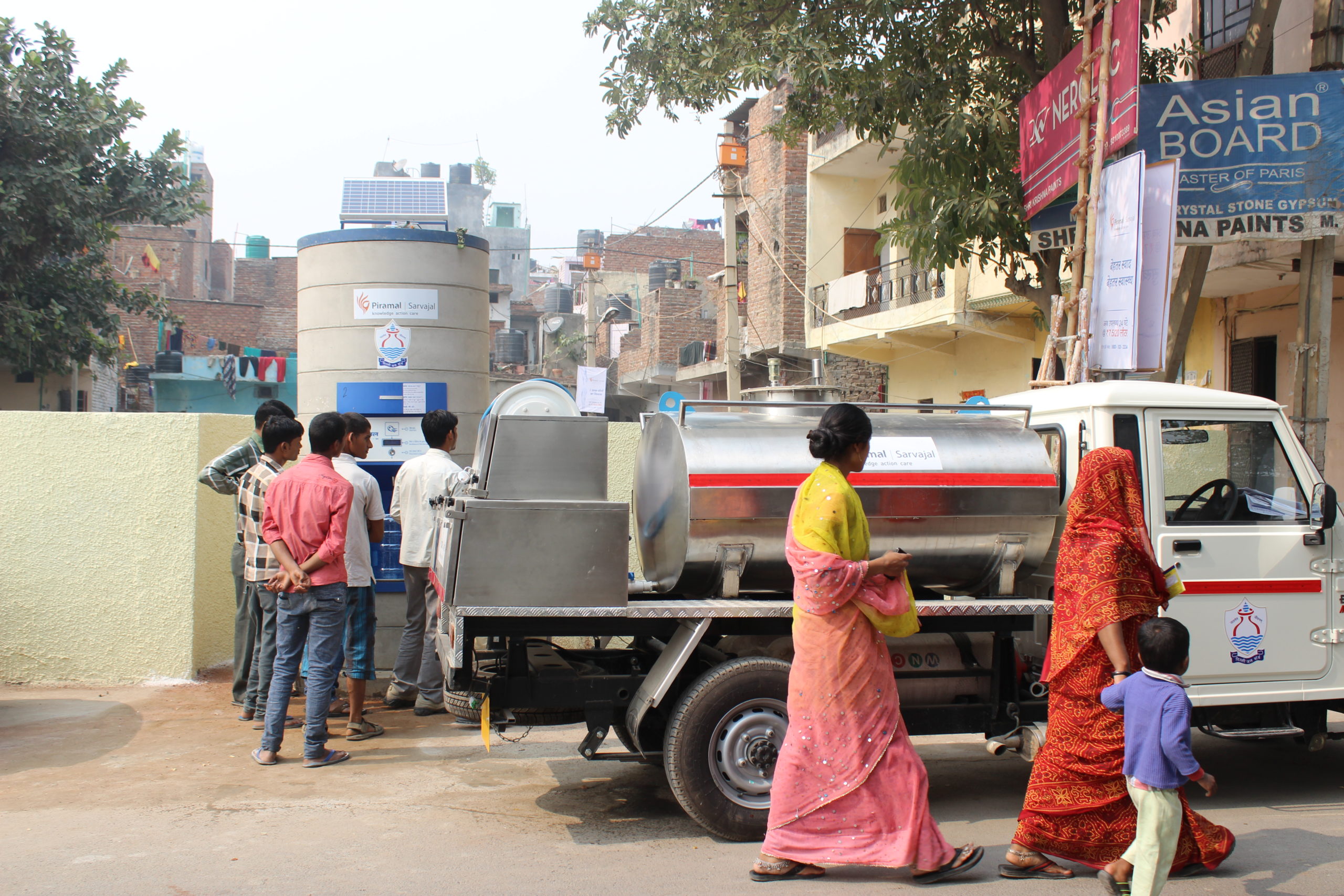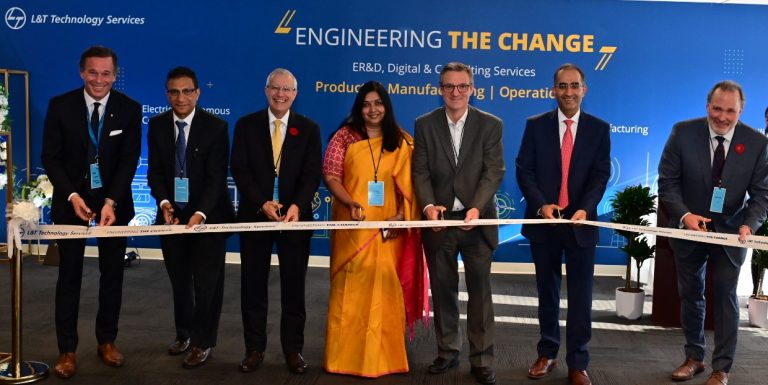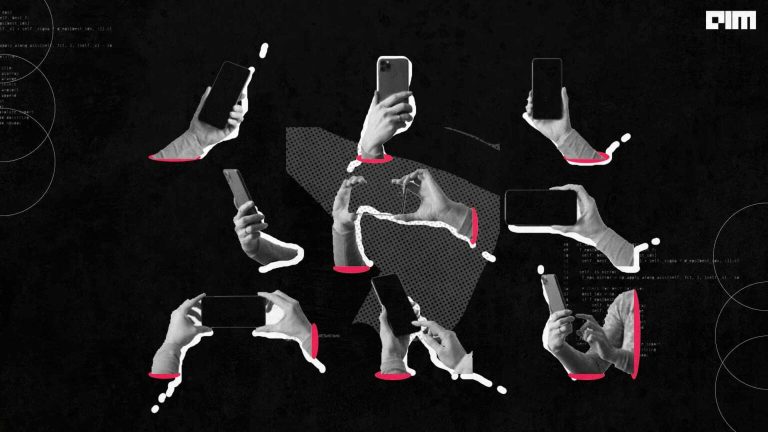“Water is wealth; water is life. Without water, life would not endure, and access to freshwater and sanitation is a basic fundamental right of humans.”
Having said that, the availability of freshwater is still a significant challenge in India, especially in rural areas. According to reports, 25 million people in India lack access to safe drinking water, and rural Indian women waste 700 hours annually collecting water. It is also estimated that by the year 2025, almost more than half of the urban population of India will live in water-stressed areas as this precious commodity is becoming scarce rapidly.
In this context, Piramal Sarvajal is committed to leveraging innovative technology to create easy access to safe drinking water in rural areas. Seeded by the Piramal Foundation in 2008, Sarvajal has been working in the water space to provide clean drinking water in the far-flung rural regions of India.
Even today, three-quarters of India still drink unfiltered water, which, in turn, leads to diarrheal deaths and permanent fluorosis. To change this, Sarvajal founder Anand Shah created a program to achieve low-cost scalable solutions serving “safe water for all.”
A Mission To Provide ‘Water For All’
Water scarcity has been a global issue; however, Piramal Sarvajal believed that the problem is multidimensional, and therefore the solutions had to be locally suited. Additionally, the voluminous nature of water, coupled with its vulnerability to contamination demanded a localised and efficient purification-cum-distribution system. While many well-intentioned NGOs have tried to implement charity-based water delivery solutions, these ventures have not proven financially sustainable over time. And therefore, the need of the hour was to apply business thinking to solve public service delivery problems.
In recent years, decentralised solutions for community-level drinking water installations have achieved significant success in creating safe water access, even in remote rural areas. Serving large enough numbers at affordable prices leads to financial sustainability while creating a local entrepreneurial ecosystem. A market-based, pay-per-use model aims to democratise drinking water access and achieve operational break-even by selling drinking water to the community at affordable prices. Piramal Sarvajal has been at the forefront of developing technologies and business practices in the safe drinking water sector that are designed to ensure sustainable solutions in both rural and urban deployment conditions. Sarvajal created a business model that operates at community levels to provide decentralised drinking water solutions to underserved communities.
Challenges
During its inception, Piramal Sarvajal had their first version of its purification unit, which had no governance-based technology involved, and all the operations were done manually. Since the initiative was bound to be a multi-location affair, distributed operations posed a severe challenge to efficiently and cost-effectively managing the project. Besides, generating sufficient demand meant breaking existing taboos around buying water by educating consumers about water-health linkages was also a challenge. Sarvajal’s team, therefore, innovated a solution that could be customised for the water contamination profile of any location with pioneering remote monitoring technology. It also invested in community awareness activities while tapping into local entrepreneurial drive and resources by adopting a franchise model.
The company used to charge to the franchisee, based on the volume of water purified by our unit. Although there was a mechanical flow meter installed in the unit that used to measure the volume of water purified by our unit, every month, a person had to go to the field to note down the reading from each unit. This process, therefore, used to take about two weeks to complete the round and collect the data. This manual reading process created a delay in the billing cycle. Additionally, they noticed some tampering with water meters at various locations, which indeed is a separate challenge altogether. To resolve these, Piramal Sarvajal explored applying cloud-based technology in order to create a smooth process by using sensors for the measurement of vital parameters like quantity, quality, pressure etc.
Water ATMs: Automated Water Dispensing Units
The company started its technological journey using the Programmable Logic Controller (PLC) with sensors and Human Machine Interface (HMI), which were attached with the PLC. “PLC-based automation has helped us in automating the unit’s operation and in remotely managing and monitoring the purification unit from our centralised location,” said Anuj Sharma, the CEO of Piramal Sarvaja. “Due to the fast-paced changes in PLC technology, we needed to update our software frequently. This triggered the design of our own, micro-controller based, control unit.”
Being the first organisation in India to develop the Water ATM, Piramal Sarvajal, operated the project in collaboration with a local entrepreneur or the local panchayat and community-based organisations to create sustainable livelihood opportunities within the chosen community. These cloud-connected and solar-powered WaterATM dispenses purified water 24×7. Villagers were issued RFID cards for collecting water, and these cards have a pre-paid balance, which can be recharged periodically as per consumption pattern. The RFID card gave the consumer the convenience of taking water anytime, anywhere across connected ATMs in a given location of flexible litres.
The IoT enabled technology installed at the purification level, ensuring the quality of every drop dispensed and supported oversight management on a real-time basis, while remotely managing locations for better governance. “The dispensing solution via Water ATM not only helps us manage and monitor user-level data but also supports targeted subsidies and variable pricing to support equitable and sustainable solutions at the last mile,” said Sharma.
The adoption of IoT technology for remote monitoring of the units helped the company in bringing transparency in operations across every transaction and ensured governance of widespread locations for both the service provider and the donor. This technology also assisted in managing the pay per use model, which, in turn, helped the consumers to pay an affordable price for clean drinking water — paying only for the service.
Operating Models
The technology that the company deployed was the Internet of Things (IoT), which required GSM/GPRS network as it acts as a backbone for communication between device and server. And, Sarvajal’s devices communicate with their centralised server over GSM/GPRS (2G) network. And ensuring that every installed unit has the availability of proper signal strength at the desired location. “Sometimes, we have noticed that even though there is a proper signal strength available at the place, still there is a delay in data exchange, which was due to the network latency,” said Sharma. And, hence, the company considered other network options like NB-IoT, which works on LTE (4G); considering its availability in most of India. The company also considered other alternate non-standard options, where telecom network is still not available, but it is under feasibility study.
Piramal Sarvajal also has enabled a technology device called Soochak, which is a remote monitoring device designed to be mounted on a commercial-scale water purification plant, to capture minute-by-minute machine status. This process works on Piramal’s technology backend, which allows the company to bring affordable, safe drinking water to underserved communities sustainably. At the same time, the touch screen of the machine easily guides the local operators on the daily functioning of the plant in the local language.
The company aimed to deploy technology at every stage — for specific parameter measurement Piramal Sarvajal have used state of the art sensors. As part of their regular preventive maintenance, these sensors are calibrated periodically so that they provide accurate data. With the help of IoT, the company gets its data from all units installed in the field, and these data are stored in their server’s database system. Also, considering the received data is large in volume; it practically wasn’t possible to do analysis manually, hence, decided to apply data analytics that provided them with meaningful information from the available data. “This helped us to know how many units are working in normal condition and how many units require attention from our maintenance team,” said Sharma. “Our devices are intelligent enough to provide real-time alerts to our operations team for any attention needed by them. Our operations team immediately acts on alerts and attends the situation.”
Application & Benefits
Sarvajal’s proprietary technology played a vital role in providing a comprehensive solution for delivering low-cost drinking water at the last mile. The various components of the technology include — water purification plants, monitoring device, the water ATM, and Sarvajal’s enterprise management system.
Sarvajal’s purification model was agnostic of the method of filtration and was utilising purification technology as per the source water. The water was getting purified through a site-designed five-step filtration process including media filtration, micron filtration, reverse osmosis (RO) filtration and UV purification. The employed proprietary technology of Sarvajal helped them in monitoring and controlling the machine operations, the source water quality, product water quality, litres produced (both rate and total), the overall health of the machine, and the amount of effluent created in the process. This real-time online monitoring enabled the company to assure a greater uptime in machine usage.
Sarvajal’s Enterprise Management System is the information processing hub of the entire company’s network of distributed installations. The SEMs receives all data sent over the cellular network for the Soochaks and Water ATMs and serves as the conduit for all operational activities within the business, such as inventory management, maintenance tracking, accounting, and asset tracking.
Additionally, the water ATM devices were solar-powered, cloud-connected, and operated automatically, which was designed to dispense water at the swipe of an RFID card. The ATMs tracked every transaction that took place, which enabled a sophisticated market forecasting and proactive multi-unit management. It also enhanced the scale of impact and optimised net investment per installation. Consequently, the ATMs established water-price transparent markets and assured 24×7 access to safe drinking water. Sarvaj’s initiative also presented an option to provide direct-targeted subsidies through government-run programs. Currently, the company is serving more than 7.30 lakhs of people daily, directly from our 1765+ touchpoints in 20 states.
While there are many players in the water space, Sharma believes, “What sets us apart is our effort of conducting community engagement activities to improve impact to increase the off-take.” Also, “Soochak throws data about machine health, so all maintenance activities are planned. Service tickets are even generated to track and also study the data generated. Our database shares information on all machines functionality at any given point in time.”
Sharma further added, “Being a technology expert in the water sector, we also aim to help the government by demonstrating the use of technology, so that the government can monitor the water supply schemes very effectively.” Sarvajal has extended the application of this model for a water pipe model too. The company partnered with the central government-run Jal Shakti mission to create a pilot model of monitoring the IoT-based water tracking mechanism at villages of Gujarat, Assam and Bihar.



















































































